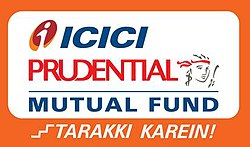Multi Asset Allocation

1Y
SI
Nav
Risk

1Y
SI
Nav
Risk

1Y
SI
Nav
Risk

1Y
SI
Nav
Risk

1Y
3Y
5Y
SI
Nav
Risk

1Y
SI
Nav
Risk

1Y
3Y
5Y
SI
Nav
Risk

1Y
SI
Nav
Risk

1Y
SI
Nav
Risk

1Y
SI
Nav
Risk
Multi-Asset Allocation Funds offer investors the benefit of diversification by investing in at least three different asset classes—typically equity, debt, and gold (or other commodities). These funds are designed to balance risk and return by spreading investments across asset classes that perform differently in various market conditions.
For investors seeking a holistic, all-in-one investment solution that adapts to changing economic cycles, Multi-Asset Allocation Funds provide an attractive and relatively less volatile investment route.
What is a Multi-Asset Allocation Fund?
A Multi-Asset Allocation Fund is a hybrid mutual fund that invests in three or more asset classes, with each asset class comprising at least 10% of the portfolio at all times, as per SEBI guidelines. These typically include equity, debt, and commodities such as gold; however, some funds may also invest in real estate investment trusts (REITs) or international equities.
The objective of this category is to enhance diversification, manage risk more effectively, and capitalize on uncorrelated returns from different asset classes. When one asset class underperforms, another might perform well, thereby balancing the portfolio.
How Multi-Asset Allocation Funds Work
Expert fund managers run these funds. They diversify their investments across different asset classes. They achieve this by examining market trends, valuation models, economic data, and geopolitical factors. The allocation is regularly reviewed and adjusted to ensure optimal performance.
Equity can grow your capital. Debt brings stability and income. Commodities, such as gold, help protect against inflation and market volatility. The fund manager's ability to adjust asset proportions in response to market trends is crucial to the fund's success.
Some funds use tactical allocation strategies. They can boost exposure to a single asset class when the outlook is favorable. At the same time, they must follow SEBI's minimum threshold for each class.
Who Should Invest in Multi-Asset Allocation Funds
These funds are ideal for moderate-risk investors seeking to invest in a diversified portfolio without the need to manage multiple funds. They suit:
- First-time investors seeking a balanced approach to investing.
- Investors who wish for a single-fund solution to exposure in various asset classes.
- Long-term investors seeking to mitigate volatility through diversification.
- Those concerned about inflation or global uncertainties can use gold and other commodities as a hedge against these risks.
They are also suitable for investors who prefer auto-rebalancing of their portfolio, with professionals taking decisions based on market conditions.
Benefits of Multi-Asset Allocation Funds
The most significant advantage of Multi-Asset Allocation Funds is diversification, which helps manage risk more effectively than single-asset class funds. When equity markets underperform, gold or debt may perform well, balancing the impact.
These funds offer automatic portfolio rebalancing, ensuring the portfolio remains aligned with the target allocation. Investors do not need to switch between asset classes based on market movements manually.
By investing in multiple assets through a single fund, investors benefit from cost efficiency and convenience. There is no need to track various funds or pay separate fees for different asset managers.
Multi-Asset Allocation Funds also offer inflation protection, particularly through the allocation to commodities like gold, which tend to perform well during periods of economic instability.
Finally, they provide access to professional fund management, where skilled managers analyze global and domestic market trends, manage risk exposure, and identify opportunities for assets.
Risks Associated with Multi-Asset Allocation Funds
While diversification reduces overall risk, it does not eliminate it. The fund is still market-linked, and returns are not guaranteed. Poor performance in all asset classes simultaneously can affect returns.
There may be underperformance if the fund manager's allocation decisions are not made in a timely or effective manner. Timing plays a crucial role in switching between asset classes, and making incorrect calls can significantly limit returns.
Commodities, while useful as hedges, are also subject to price volatility, driven by global demand and supply factors, as well as geopolitical events.
There is also a potential for moderate to high expense ratios, depending on the complexity of asset allocation and fund management.
Taxation of Multi-Asset Allocation Funds
Taxation depends on the fund's asset mix. If the fund maintains an allocation of 65% or more to Indian equities, it is taxed as an equity fund.
In that case, short-term capital gains (if sold within 1 year) are taxed at 15%, while long-term gains (after 1 year) are taxed at 10%, with exemption on the first ₹1 lakh of gains.
However, if the fund's equity exposure is below 65%, it is taxed as a debt fund. According to the new tax rules applicable from April 2023, capital gains on debt-oriented funds are added to the investor's income and taxed according to the income tax slab, regardless of the holding period.
Investors should check the fund's factsheet or consult a tax advisor before investing, especially if tax efficiency is a priority.
Returns from Multi-Asset Allocation Funds
The returns vary depending on the market cycle, asset allocation decisions, and economic factors. Historically, Multi-Asset Allocation Funds have delivered returns in the range of 7% to 11% per annum over the medium to long term.
These funds tend to underperform during a sustained equity bull run, as their conservative allocation to gold or debt limits upside. However, they tend to outperform pure equity funds during volatile or bearish phases, due to the cushioning effect of debt and commodity exposure.
When to Invest in Multi-Asset Allocation Funds
How to Invest in Multi-Asset Allocation Funds
Investors can invest via a Systematic Investment Plan (SIP) or lump sum, depending on their preference and financial goals. SIP is ideal for regular investing and rupee cost averaging.
Before choosing a fund, consider factors such as historical performance consistency, asset class strategy, the fund manager's experience, and the expense ratio.
Funds are available via AMC websites, mutual fund platforms, or financial advisors. Growth and dividend (IDCW) options are both available based on income preference.
Get In Touch
Interested in exploring more about JezzMoney Mutual Fund Distributors Software? Submit the form, and we will respond quickly.
Get Expert Advice on Investment in Mutual Funds!
- Certified mutual fund distributors around India will reach out to help you build your future.
- Connect with trusted mutual fund distributors and find them from your city and pincode area.
- JezzMoney is only the mediator to help you connect with these certified professionals.
- It is your obligation to gather accurate information when you receive contact from our platform.